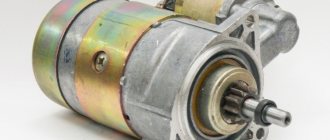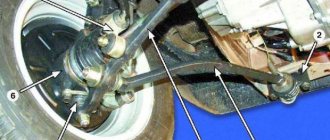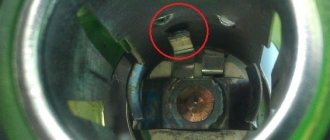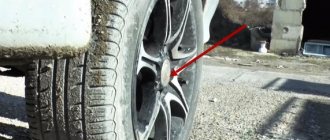Plant characteristics
The light-loving maple originated from North America. There it is widespread, grows up to 20 meters or more in height and can live up to a hundred years. In street plantings, trees live shorter lives, up to 30 years. The tree has a short trunk, branched at the base, with dark bark and cracks, which turn into deep grooves as the tree ages.
The crown of the tree is spreading, the leaves have jagged edges and a dark upper surface. In autumn the leaves turn yellow and reddish foliage may appear. Because of the leaves similar to those of an ash tree, this type of maple is also called Ash-like. The winged fruits ripen at the end of summer and remain on the branches until spring. The tree tolerates frosts of 35 and 40 degrees well, so it feels good even in the Urals and Siberia.
Source: Depositphotos
The characteristically shaped leaves and winged maple fruits are recognizable
Why does the American maple need to be destroyed?
Wood is a strong allergen with a wide distribution area. In addition to rapid spread, it has a number of disadvantages:
- It grows quickly and crowds out other plantings. At the same time, it is not the best neighbor for residential buildings - the branches and trunk are quite fragile and can fall on the roof in a strong wind. Fragile branches and trunks can fall on your home or other plantings at any time.
- During flowering, it releases a large amount of pollen, which can cause allergies in people.
- The crown grows very widely and is difficult to correct. The plant is not suitable for landscape design. The wide crown also shades other plantings.
- The root system and shoots spread quickly and widely, breaking the asphalt and preventing other plants from growing.
- Roots and decaying leaves release toxins that inhibit the growth of other plants.
- The wood is brittle and therefore not suitable for construction. Only wooden boxes or household items are made from American maple wood: vases, sculptures, knife handles.
The tree has its positive aspects, but they are more suitable for its growth in the wild. Spreading crowns often attract residents. Birds build nests on the branches and eat the fruits of the tree. Lionfish and squirrels love to eat. Scientists use maple to breed new varieties of wood. For example, as a result of selection, the decorative maple Flamingo appeared.
If you do not want to destroy the tree and still decide to leave the maple on the site, it will not require special care. In the spring it can be fed with potassium and sodium fertilizers and watered periodically. The watering rate is 15 liters for old trees and twice as much for young trees. In summer, it is advisable to weed and loosen the soil around the tree and remove side branches.
We still recommend destroying the surrounding shoots like weeds, if you do not plan to propagate maples over the entire area of the site.
Source: Depositphotos
Maple seeds take root well in the soil, many of them germinate
Chemical methods of controlling ash maple
Using table salt
One of the cheapest reagents for controlling plants is table salt. You can purchase an unrefined coarse-grained mineral; it is sold for livestock farms.
Holes are drilled into the stump to a depth of 10...12 cm. It is most convenient to use a percussion Ø 12...20 mm. For thick stumps, you need to drill several holes; they are placed closer to the periphery. If the trunk is no more than 12 cm, it is enough to drill one.
They are filled with salt. Leaving a little space, hammer in a cork (can be made from a branch of a given tree).
Application of mineral fertilizers to destroy maple
Experience shows that any type of mineral fertilizer can be detrimental to a tree. You just need to use them in sufficient quantities. High salt concentrations contribute to wood decomposition and tree death.
Proceed by analogy with how the use of salt is described.
- Drill holes.
- Fertilizer is added.
- Traffic jams.
In practice, it has been found that the cheapest option is to use sodium or ammonium nitrate. The use of urea gives good results.
Mineral salts burn the inside, they spread inside the roots. After a year and a half, the maple turns into rotten wood, which can be used as organic fertilizer.
Some gardeners use a similar method without cutting down the trunk. Holes are drilled in the spring. They try to deepen it to 15...20 cm. The diameter can be made only 10...12 mm.
They are placed at a height convenient for using an electric drill (80...12 cm from the ground). Drilling is performed with a slope, directing them down. All that remains is to fill in the granules or pour the concentrate inside, and then hammer in a tight plug.
After such treatment, by autumn, trees whose age does not exceed 7...10 years die. For more powerful maples, the operation is repeated a year later - not a single tree has survived double treatment.
Using pesticides to control American maple
Chemical weed control products are excellent for eliminating maple weeds. Herbicides: Roundup, Tornado, Ground and many others are excellent for killing annuals. It is enough to spray the green foliage. Subsequently, toxic substances will penetrate inside the plant.
First the green part will die, later the poison will penetrate into the root part. The weedy maple seedling will die within 20…30 days.
Trees are treated differently. The tree is cut down, and a concentrated solution is applied to the remaining stump. In two to three months the root part will die off. It is uprooted or burned on the spot. Sometimes you just have to use firewood.
You can find other ways to remove maple from a site, but their effectiveness will be lower. In this case, the cost of work will be higher. It is important to remove trees without polluting the surrounding environment.
In this article we will share information on how to quickly and effectively get rid of maple trees on your property.
The appearance of shoots of ash maple - one of the most common plants in forested areas - becomes a real disaster for many land owners, especially if new shoots are constantly found in the beds in the garden or next to fruit trees in the garden. In addition, American maple has very fragile wood. Overgrown specimens often break or lose large branches in inclement weather, which is unsafe for country houses and outbuildings.
How to get rid of American maple
One of the methods of dealing with maple is prevention. The plant easily takes root in empty areas where the wind can blow lionfish, so plant the entire area with useful plants. If you have desert areas, check them regularly and eliminate any strange weeds or growths.
Dealing with weeds and small trees is, of course, easier than with plantings that take up half the garden. So if the trees are small, you can try simple gentle methods first:
- Apply salt to the cut piece of wood. The layer must be thick - salt inhibits the growth of the tree and inhibits the root system. Cover the cut with plastic to ensure a seal. You can cover the cut with light-proof material. The method does not harm other trees or soil.
- Bury the tree stump with plenty of crushed stone or soil. If possible, concrete the area.
- Remove the rhizome and above-ground parts of the tree from the ground. If the root is deep, it may be worth using agricultural machinery. (Read about how to remove tree stumps on your property here).
Alternative Methods
There are also several alternative ways to make the tree dry out quickly. Let's look at the most effective, and therefore popular, ones. For the convenience of visitors, the information below is presented in table form.
Table. How else can you treat wood to make it dry?
Method No. 1. Using salt
Method No. 2. How to cover roots
Method No. 3. Shutting off the air supply with mulch
Note! By the way, if the roots are blocking the sewer line, you can use Root Destroyer (if you can find it), which you just need to flush down the toilet. This way you will only kill the roots that have penetrated the network, but will not harm the tree.
When the tree dries out, it is cut down and burned. But after this, roots remain in the ground, which can also cause a lot of trouble. Below is a short guide to mechanically removing a stump.
Video - How to remove a stump using a chemical method
| It has long been known that salt destroys vegetation when it enters the soil. Therefore, salt can easily destroy the roots and the tree itself. It is advisable to use a salt solution if you are concerned that the vegetation near the tree may also be destroyed. Water the soil with the solution while it absorbs it. The salt concentration depends on the size of the tree (the larger it is, the more it should be). | You can block the flow of moisture and oxygen to the roots - to do this, you just need to fill them with concrete to the very base of the trunk. After 2-4 weeks, the roots will die, and the tree itself, accordingly, will begin to dry out. This method is advisable if a path is planned to be built in place of the tree. | The method resembles the previous one, but is more attractive and environmentally friendly. Place a layer of mulch (from 15 cm) over the roots and up the tree itself. This will partially block the supply of nutrients, and the tree will slowly begin to die. |
How to defeat young shoots
If young growth of American maple has appeared on the territory, and you are not a supporter of the use of chemicals, you can use mulching. Soft types of mulch will not help in this case - you must use bark or sawdust, and the mulch must be at least 5 cm thick.
A good result can be obtained by covering the ground with a covering material - spunbond, lutrasil or any dark-colored geotextile will do. Ordinary cardboard will do the job well. Cover the ground and reinforce the covering around the perimeter, as well as in several places in the center, and leave for at least a month. This method is best used after harvest or in the fall. But here it is necessary to take into account that in addition to the maple, other plants will also die, so if it is, for example, a lawn, then it will have to be re-sowed.
Good results can be obtained by using EM drugs, for example, “Shine-3”. Sprinkle the area with overgrown growth with the preparation, carefully reading the instructions. Cover this area with covering material. Be careful with nearby plantings; if they come into contact with them or the soil next to them, the plants may die. The drug is harmless to the environment; moreover, after the period of its influence ends, you will receive a wonderful area ready for planting any plants.
Maples have a large crown that can shade most of the area
The main methods of destroying trees with chemicals
Let’s immediately say that there are many such methods, so we will consider only the most effective of them.
Method No. 1. Application of chemicals to living tissue
The tree bark is an obstacle due to which herbicides cannot penetrate the vascular tissues of the plant. Therefore, in order for the product to reach its destination, make downward cuts on the surface of the trunk, but do not tear off the bark. Use a small ax for this. As a result, notches and cuts should be made along the entire circumference of the trunk.
Application of preparations to living wood tissue
Use the herbicide you have chosen after making the cuts - apply it to the wood tissue.
Making cuts on a small tree
Note! Do not use herbicides in the spring because the sap that oozes from the cuts will prevent the chemical from absorbing.
Method No. 2. Watering the soil with herbicides
Individual preparations can be used for uniform application to the soil surface. After rain or artificial watering, the herbicide will enter the root system. To concentrate the chemical in one place, you can resort to installing barriers in the ground (for example, concrete).
Note! This method is advisable to use in cases where it is necessary to destroy several or many trees at the same time.
Method No. 3. "Killer" injections
They are very close in their principle of operation to method No. 1, and differ only in the fact that special devices are used to introduce chemicals into the tissue. The maximum effectiveness of the methods is achieved if a targeted effect is applied around the circumference of the trunk in increments of 5-10 cm. Injections are made at a height of approximately 1 m from the ground. The method is used for trees whose trunk diameter exceeds 5 cm.
Step 1. First, prepare a drill, as well as a drill bit for it, the diameter of which is 5-10 mm.
Step 2. Make holes 4-5 cm deep as described above. It is important that the drill is at an angle of 45-50° relative to the ground surface when working.
Holes in the barrel
Step 3. Take a simple pharmacy syringe, fill it with a product whose active ingredient is glyphosate (for example, “Ground”, “Tornado”, etc.), or, alternatively, pour the chemical directly into the holes. The concentration of glyphosate in the product must be at least 200 g/l.
Take a regular syringe
For example: to dry a tree with a trunk diameter of 35 cm, you will need 35-40 ml of a product in which the concentration of glyphosate is 360 g/l.
Step 4. Seal the holes with earth to hide traces of injections, remove the shavings and see if the drug leaks out (the latter is good because it dries for a long time and is clearly visible on the bark). Soon enough the plant will begin to dry out.










